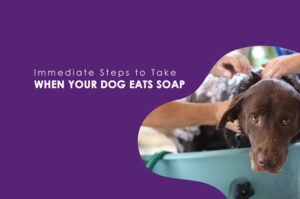Although having a pet and gardening are both fulfilling endeavors, balancing the two can be difficult. Due to their naturally curious and joyful nature, pets may dig, chew, or otherwise interact with plants in a way that could harm your garden. Fortunately, it is possible to design a beautiful and healthy garden without risking your pet’s safety. Creating an outside space that is both secure and pleasurable for your pet is essential to their overall wellbeing.
Here are some tips for creating a pet-friendly garden:
1. Choose Pet-Safe Plants

It’s crucial to choose plants for your yard that are secure for your animals. If consumed by animals, a number of common plants, including tulips, azaleas, and lilies, can be hazardous. Look into plants that are good for pets and choose non-toxic varieties. Sunflowers, pet grass, and marigolds are a few pet-friendly plant choices. These plants give your garden aesthetic appeal, but they also give your pets a secure haven.
2. Create a Designated Play Area

Pets require their own area to play and explore, just like people do. Give your pet a designated space in your garden where they can go at their leisure. This space can be marked by a fence or divided by plants or fences. To avoid your pet running away or into trouble, make sure it is safe and unbreakable. You can also add some pet-friendly toys and obstacles to keep them entertained.
3. Install a Pet-Friendly Water Feature
Any garden can benefit greatly from the addition of water elements like fountains or ponds. But if they’re not securely secured, they could be dangerous for pets. Make sure your garden’s water feature is pet-friendly if you have one. For your pet’s safety, think about building a small water fountain or shallow pond where they can play and drink. Avoid deep water features that could potentially harm your pet.
4. Use Natural Pest Control Methods
When it comes to pest control in your garden, it’s important to choose pet-friendly options. Avoid using chemical pesticides or fertilizers that could be harmful to your pets. Instead, opt for natural pest control methods such as companion planting, using organic fertilizers, or introducing beneficial insects like ladybugs and praying mantises. These methods not only keep your garden free from pests but also ensure the safety of your furry friends.
5. Create Shade and Shelter

Just like humans, pets need a place to seek shelter from the sun and rain. Create shaded areas in your garden where your pet can relax and cool off. You can use umbrellas, shade cloths, or even plant trees or shrubs to provide natural shade. Additionally, consider providing a sheltered spot where your pet can take refuge during inclement weather.
6. Secure Boundaries and Fencing
It’s crucial to ensure that your garden is securely fenced to prevent your pet from escaping or wandering into unsafe areas. Regularly inspect your fences and gates for any gaps or holes that your pet could squeeze through. Reinforce weak spots and consider installing pet-friendly fencing materials that are difficult to climb or chew through.
7. Avoid Harmful Mulch and Chemicals
Some types of mulch, such as cocoa mulch, can be toxic to pets if ingested. When choosing mulch for your garden, opt for pet-friendly alternatives such as cedar or pine mulch. Additionally, be cautious when using chemicals such as weed killers or fertilizers. Read the labels carefully and choose products that are safe for pets. Always follow the instructions and keep your pets away from treated areas until it is safe for them to return.
Conclusion
Creating a pet-friendly garden is all about ensuring the safety and well-being of your furry friends. By choosing pet-safe plants, creating designated play areas, providing shade and shelter, and using natural pest control methods, you can create a safe and enjoyable outdoor space for your pet. Remember to always supervise your pet while they are in the garden and provide them with plenty of love and attention. Happy gardening!
FAQs (Frequently Asked Questions)
Are there specific plants that are safe for pets?
Yes, many plants are safe for pets. Some examples include pet-friendly herbs like basil and mint, as well as non-toxic flowers like marigolds and sunflowers.
What plants should I avoid if I have pets?
Avoid toxic plants such as lilies, azaleas, and oleander. These can be harmful or even fatal to pets if ingested.
How can I create a pet-friendly play area in my garden?
Designate a safe space with pet-friendly grass varieties, avoid using chemical fertilizers or pesticides, and include pet toys to encourage play.
Are there natural pest control methods that won’t harm my pets?
Yes, consider using companion planting, neem oil, or diatomaceous earth. These methods are effective against pests and safe for pets.
What precautions should I take with mulch to ensure pet safety?
Opt for pet-safe mulch such as cedar or pine, and avoid cocoa mulch which can be toxic to dogs. Ensure your pet doesn’t ingest large amounts.
How can I protect my garden from digging pets?
Create designated digging areas, use barriers like decorative fencing, and provide alternative entertainment like buried toys.
Are there pet-friendly alternatives to chemical fertilizers?
Yes, consider organic fertilizers or create compost from pet-safe materials. Avoid fertilizers with bone meal, as it can attract pets.




